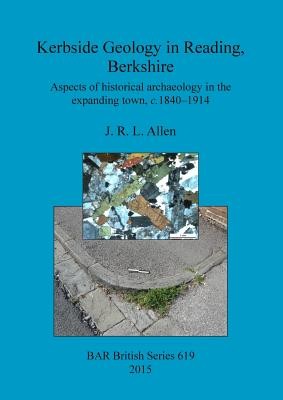
- We will send in 10–14 business days.
- Author: J R L Allen
- Publisher: British Archaeological Reports Oxford Ltd
- ISBN-10: 140731405X
- ISBN-13: 9781407314051
- Format: 21 x 29.7 x 1 cm, softcover
- Language: English
- SAVE -10% with code: EXTRA
Reviews
Description
Between 1801 and the First World War the population of the Borough of Reading increased almost tenfold, simultaneously with the growth of new industries. The authorities responded by delineating new streets and encouraging development in districts springing up mainly to the east, south and west beyond the original market town. The Borough's Highways Committee, helped by legislation, played a major role in managing and guiding these activities, especially in the later part of the nineteenth century. Largenumber of bricks burnt from local clays were used to build houses, shops, schools, chapels and churches required in these new suburbs, but the making of the streets called for the procurement of stone from far and wide. This volume discusses the geological features, spatial distribution and geographic sources (such as south Oxfordshire, Wales, Leicestershire and as far away as Norway) of the types of stone used for road construction in Reading in the late nineteenth and early twentieth centuries.
EXTRA 10 % discount with code: EXTRA
The promotion ends in 17d.19:41:07
The discount code is valid when purchasing from 10 €. Discounts do not stack.
- Author: J R L Allen
- Publisher: British Archaeological Reports Oxford Ltd
- ISBN-10: 140731405X
- ISBN-13: 9781407314051
- Format: 21 x 29.7 x 1 cm, softcover
- Language: English English
Between 1801 and the First World War the population of the Borough of Reading increased almost tenfold, simultaneously with the growth of new industries. The authorities responded by delineating new streets and encouraging development in districts springing up mainly to the east, south and west beyond the original market town. The Borough's Highways Committee, helped by legislation, played a major role in managing and guiding these activities, especially in the later part of the nineteenth century. Largenumber of bricks burnt from local clays were used to build houses, shops, schools, chapels and churches required in these new suburbs, but the making of the streets called for the procurement of stone from far and wide. This volume discusses the geological features, spatial distribution and geographic sources (such as south Oxfordshire, Wales, Leicestershire and as far away as Norway) of the types of stone used for road construction in Reading in the late nineteenth and early twentieth centuries.


Reviews